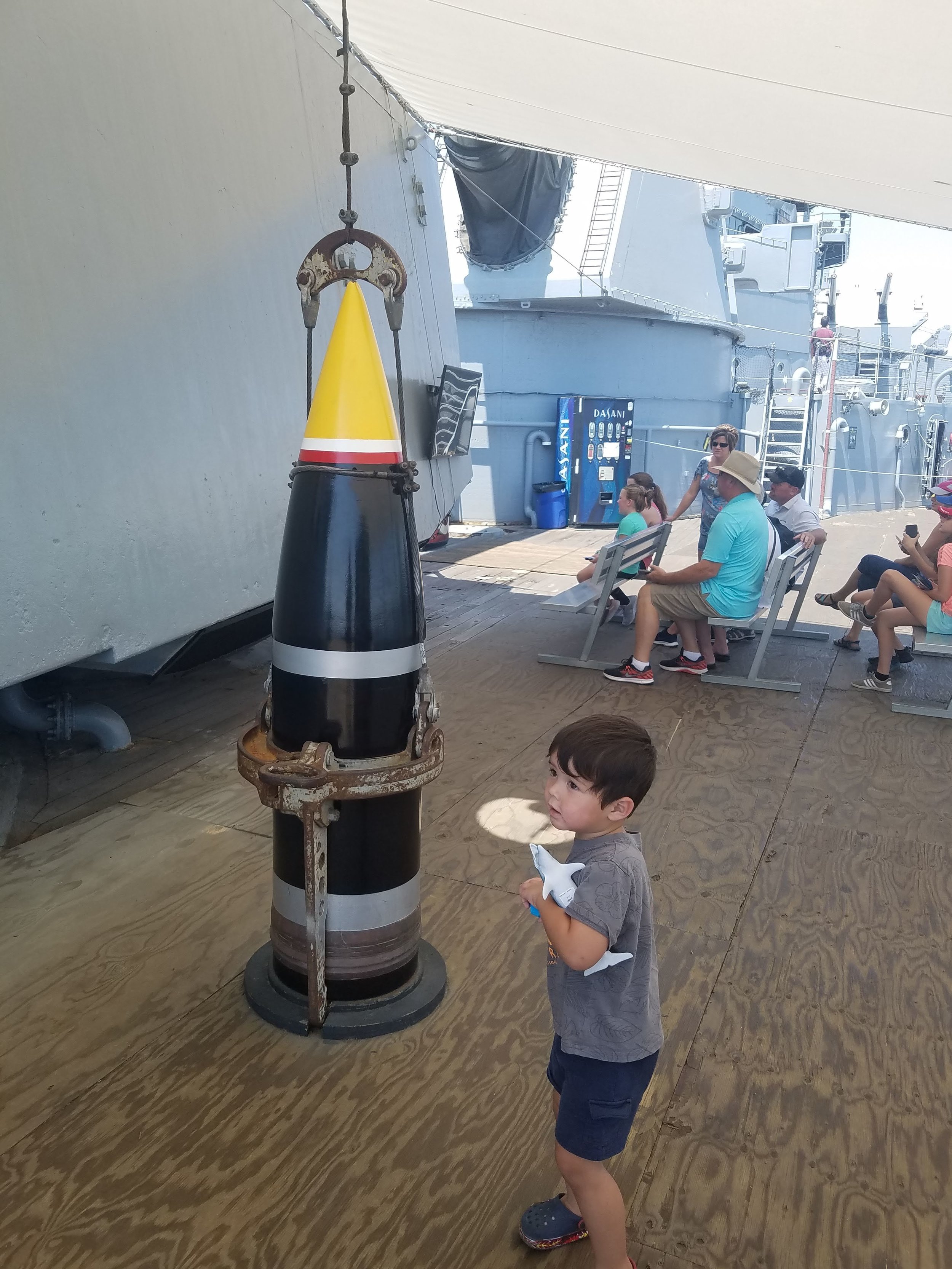Despite the blue skies and the warm weather, a visit to the USS Iowa is hardly a care-free trip to the seaside. Billed as a floating museum, the decommissioned battleship serves as a sobering reminder of the real cost of being a free country. At first glance, the ship seems massive as it rises high above its dock and lords over the harbor. Even in peacetime, the Iowa was intended to be a dramatic show of force brandishing no less than nine, sixteen-inch guns. Once a part of United States diplomacy, battleships were the big stick that Teddy Roosevelt was referring to. Moored in San Pedro, California, it now serves as a permanent display and a reminder of the sacrifices people have made to uphold the ideals upon which the United States was founded.
Before climbing aboard, the Iowa seems mountainous. However, its size becomes unbelievably small when one moves through the tight spaces and steep staircases. Cramped and unwelcoming, the warren of walkways really help to provide a context for the daily demands a sailor faed that a history book cannot. The reality of what it means to serve became all too evident when touring the ship.
Sailors on the Iowa sacrificed comfort and any level of personal autonomy. At 800 feet long and 100 feet wide, this ship was everything to them. This is where they ate. This is where they slept. This is where they stood watch and fought. This is where they dreamed about being back home. This is quite possibly the place where they had the best and the worst moments of their lives. Sailors woke up, stacked three high in their bunks. From that moment on, they did not have a second of personal privacy. During World War II, a full crew was more than 2000 people strong. It is clear that to serve on a battleship would mean being jammed in shoulder to shoulder. Creature comforts like personal space and privacy we non existent as they put themselves deliberately in harm's way as they pushed back against Fascism and Imperialism. Far from home, sailing through the dark nights, being tossed by rough seas as they pursued their enemies, there was no guarantee that they would ever see home again. The Iowa saw combat all through the Pacific, even managing to survive two kamikaze attacks. The level of trust those crews had to have for each other is staggering to consider. The only way that any of them would be able to get home would be if each and every one of them did his job.
The mission of those first crews wasn’t much different from many of those sailors who followed. Peacetime service did not mean any less danger. In 1989, the Iowa became one of the worst non-combat disasters when 47 sailors died, killed by an explosion in one of the turrets. Despite the risks of personal safety, the hope of any of those crews was that their sacrifice would help preserve the security of their home, a place where the citizens created a government dedicated to preserving their freedoms. The fact that the democratic experiment continues to exist for almost 250 years is in large part because of the men and women who are willing to put their lives on hold and to criss cross the globe in an attempt to help generations of people who they would never meet.
Considering the human cost, it's no wonder why when coming aboard the USS Iowa, every visitor is asked if he or she served. Service members have their names and dates of service announced over the loudspeakers. It is a welcome home and a small gesture of thanks to others who have given years of their lives to be in similar situations. While it may be a small thing it did not go unnoticed.
This post was written after a visit to the USS Iowa on August 12, 2018.
250 S Harbor Blvd.
Los Angeles, CA 90731
877 446-9261
Looking for other places with big machinery? When in Sacramento, pay a visit to The California State Railroad Museum.











